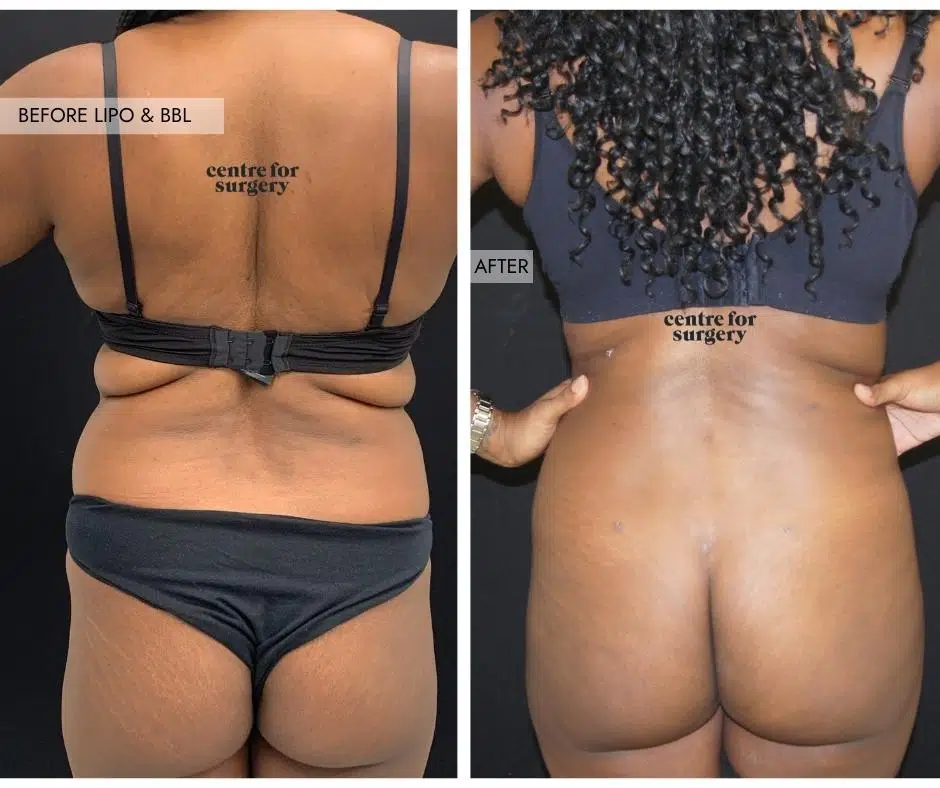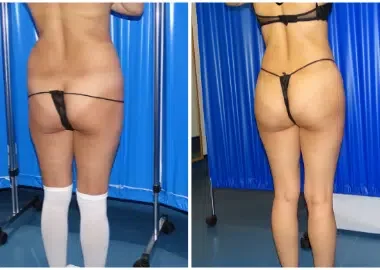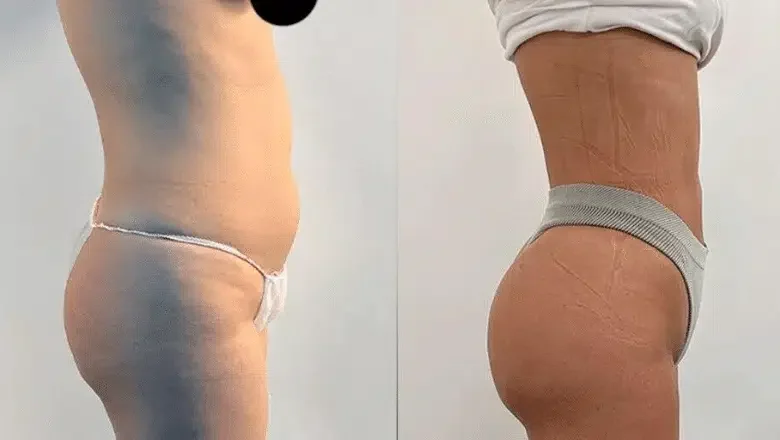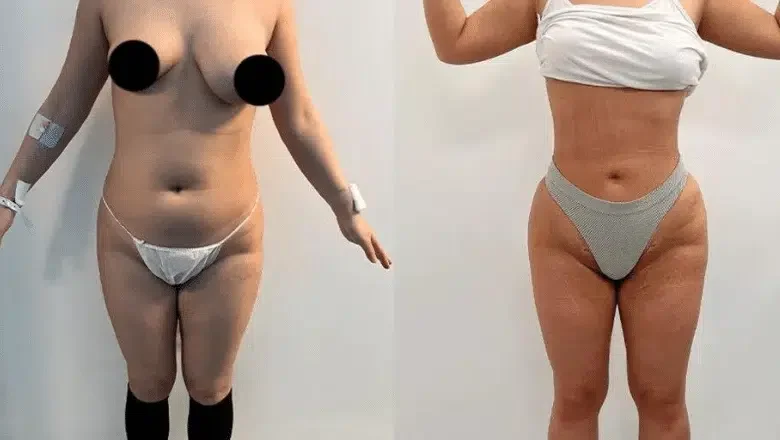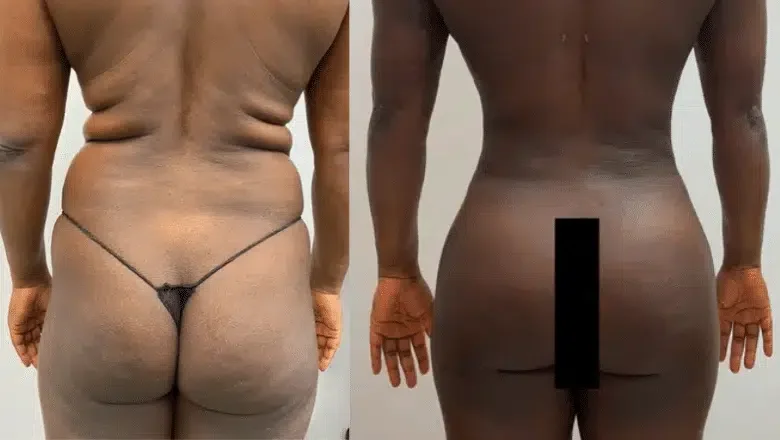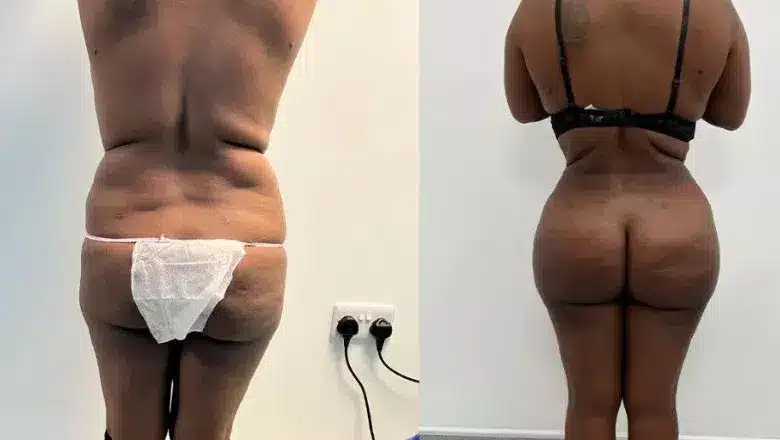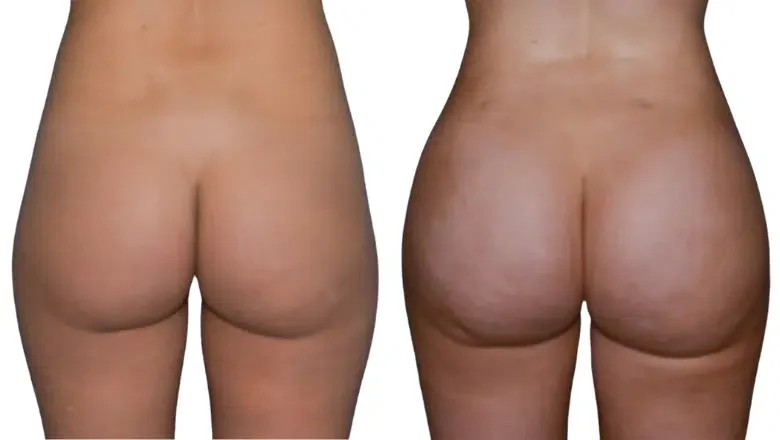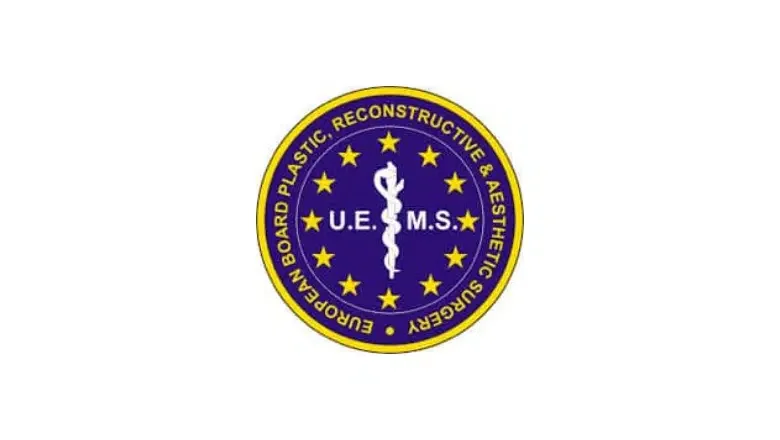One of the most popular ways to enhance the size and shape of the buttocks is with a Brazilian butt lift or BBL at Centre for Surgery. Before choosing to undergo the procedure, here are some important facts about BBL surgery to allow you to make an informed decision and decide whether a BBL is worth it.
RELATED: Brazilian Butt Lift FAQs – Q&As about BBL Surgery
People of all body types can get a BBL
While people of all body types can technically get a BBL, the best candidates for the procedure are those who have enough fat in other areas of their body that can be safely removed and used for the transfer. Additionally, the best candidates for BBL should have good skin elasticity, as this will help ensure a smooth and natural-looking result.
BBL can improve volume and shape
A Brazilian Butt Lift (BBL) is a cosmetic surgery procedure that can change the shape and volume of the buttocks. The procedure involves removing fat from one area of the body, such as the stomach, hips, or thighs, and transferring it to the buttocks. This can result in a significant increase in the size and shape of the buttocks, as well as a more defined and lifted appearance.
RELATED: BBL Shapes – Get The Perfect Looking Butt
BBL gives more natural-looking results compared with Butt Implants
Brazilian Butt Lifts (BBL) and Butt Implants are two different methods for enhancing the shape and size of the buttocks. BBL uses the patient’s own fat to augment the buttocks, while Butt Implants involve placing silicone or saline implants under the skin.
BBL can give more natural-looking results compared to Butt Implants because the fat used in the procedure is taken from the patient’s own body. This means that the final result will closely match the patient’s own body type and skin tone. Additionally, BBL allows for more precise shaping and contouring of the buttocks.
Butt Implants, on the other hand, can sometimes appear less natural-looking and can feel firmer to the touch than a BBL. Additionally, Butt Implants may be visible or palpable through the skin, and can be associated with a greater risk of complications such as infection, implant displacement or rupture,
RELATED: Butt Implants vs BBL
BBL is a 2-in-1 procedure
BBL is an outpatient procedure
A Brazilian Butt Lift (BBL) is typically performed as an outpatient procedure, which means that patients are able to go home the same day as their surgery.
The procedure is usually done under general anaesthesia or IV sedation and takes around 2 to 4 hours to complete. During the surgery, the surgeon will make small incisions in the areas where the fat will be removed, such as the stomach, hips, or thighs. The fat will then be carefully harvested and purified before being transferred to the buttocks.
After the procedure, the patient will be taken to a recovery area to be monitored until they are stable enough to go home. The patient will be given post-operative instructions and will be given medication for pain control and antibiotics to prevent infection.
It is important to remember that recovery can take several weeks, and patients will need to avoid sitting directly on the buttocks for at least 2-3 weeks and avoid strenuous activities for at least 4-6 weeks to ensure proper healing and best results.
BBL results do not appear immediately
The results of a Brazilian Butt Lift (BBL) procedure do not appear immediately. The final results of the procedure will take several weeks or even months to fully develop.
After the procedure, the buttocks will be swollen and may appear larger than the final result. The swelling will gradually reduce over time, revealing the final shape and size of the buttocks. It’s important to know that there will be a period of time when the buttocks will appear smaller than expected as the swelling subsides and the final shape emerges.
The body will also go through a process of reabsorbing some of the transferred fat, which can take several weeks or months. The final result will not be fully visible until the swelling and reabsorption have subsided.
It is also important to follow the post-operative instructions of the surgeon, including avoiding sitting directly on the buttocks for at least 2-3 weeks and avoiding strenuous activities for at least 4-6 weeks to ensure proper healing and best results.
Squats cannot achieve the same results as a BBL
Squats are a popular exercise for toning and strengthening the muscles in the legs, glutes, and core, but they cannot achieve the same results as a Brazilian Butt Lift (BBL) procedure.
A BBL procedure is a cosmetic surgery that uses the patient’s own fat to enhance the shape and size of the buttocks. The procedure involves removing fat from one area of the body, such as the stomach, hips, or thighs, and transferring it to the buttocks. This can result in a significant increase in the size and shape of the buttocks, as well as a more defined and lifted appearance.
On the other hand, squats are a great exercise for strengthening and toning the muscles in the legs, glutes and core, but they do not directly target the fat in the buttocks. Squats can help to improve the overall shape and tone of the lower body, but they will not result in a significant increase in the size or shape of the buttocks.
RELATED: BBL vs Squats
A BBL should not be combined with a tummy tuck
A Brazilian Butt Lift (BBL) and a tummy tuck (abdominoplasty) are both cosmetic surgery procedures that can enhance the shape and appearance of different areas of the body. While it is possible to combine these procedures, it is generally not recommended to do so during the same surgery.
RELATED: Can You Combine a Tummy Tuck and BBL?
A BBL procedure involves removing fat from one area of the body, such as the stomach, hips, or thighs, and transferring it to the buttocks. A tummy tuck procedure, on the other hand, involves removing excess skin and fat from the abdomen to create a tighter and flatter stomach.
Combining these procedures during the same surgery can increase the risk of complications, as well as the length of the surgery and recovery time. Additionally, the recovery process can be more uncomfortable as both procedures involve incisions and swelling.
It is also important to keep in mind that the amount of fat that can be safely removed during a BBL is limited, and combining it with a tummy tuck can reduce the amount of fat that can be used for the BBL, which may affect the final results. It is possible that a staged approach, performing first one procedure and then the other, or a combination of non-surgical and surgical procedures, may be a better option for some patients.
Achieving Long-Term Success with Your Brazilian Butt Lift
Achieving the best possible outcome from a Brazilian Butt Lift (BBL) requires a commitment to following your surgeon’s detailed aftercare instructions and adopting healthy lifestyle habits. Here’s a detailed guide on how to ensure your BBL results are not just achieved but maintained for the long haul.
Immediate and Long-term Aftercare
Post-Operative Guidelines: From the moment you leave the operating room, the journey to recovery begins. Your surgeon will provide you with a tailored set of aftercare instructions during your consultation at our premier London clinic, with reminders issued before your surgery. These guidelines include wearing a compression garment, limiting physical activity, and how to use a BBL pillow correctly to avoid putting undue pressure on your buttocks.
Compression Garments and BBL Pillow: Wearing your surgical compression garment as advised for up to 8 weeks post-surgery helps reduce swelling and supports the new contours of your buttocks. The BBL pillow is not just an accessory; it’s an essential tool for redistributing your weight when you sit, protecting the integrity of the fat transfer.
Lymphatic Drainage Massages: Incorporating lymphatic drainage massages into your recovery process can accelerate healing, reduce swelling, and minimize scarring, enhancing the overall appearance of your results.
Progressive Physical Activity
Initial Exercise Restrictions: In the early stages of recovery, avoiding strenuous exercises is crucial to prevent complications such as seromas or hematomas, which can necessitate further medical intervention. Your surgeon will advise when it’s safe to resume light activities.
Resuming Workouts: After the initial 2-3 months, reintroducing exercises that focus on strengthening the gluteal muscles, like squats, bridges, and lunges, can help enhance and maintain your BBL results. These activities contribute to the firmness and shape of your buttocks, complementing the surgical enhancements.
RELATED: When Can You Workout After BBL?
Nutrition and Lifestyle
Balanced Diet: A nutritious diet rich in fruits, vegetables, whole grains, and proteins is foundational to maintaining the health of your tissues and ensuring optimal healing. Avoiding alcohol around your surgery is also advised, as it can increase inflammation and impede the healing process.
Weight Management: Keeping your weight stable post-BBL is critical to preserving the surgery’s outcomes. Significant weight fluctuations can alter the appearance of your buttocks, affecting the longevity of the results.
RELATED: How to Feed Fat after BBL
Ongoing Support and Follow-up Care
Regular Check-ups: You will have scheduled follow-up appointments with our specialist cosmetic nurses and your surgeon to monitor your healing progress. These sessions are vital for addressing any concerns and ensuring your recovery is on track.
24/7 Nurse Helpline: Our dedicated nurse helpline is available around the clock for any immediate post-operative concerns. If necessary, they can facilitate direct communication with your surgeon for more complex issues.
Brazilian Butt Lift Surgery in London
Centre for Surgery in London is the leading cosmetic surgery clinic in the UK. It is renowned for its expertise in BBL surgery, using the most advanced techniques, including ultrasound-guided BBL. We are home to highly specialised BBL surgeons with years of experience in all types of BBL surgery. Call us today on 0207 993 4849. Complete the contact form below to schedule an in-person BBL consultation at our state-of-the-art Baker Street clinic in London.











